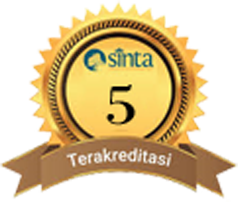PENERAPAN MODEL MIND MAPPING PADA PEMBELAJARAN IPA UNTUK MENINGKATKAN HASIL BELAJAR SISWA KELAS V SDN 9 MUARA BATU KABUPATEN ACEH UTARA
DOI:
https://doi.org/10.22373/fitrah.v5i1.2465Keywords:
Mind Mapping Models and Learning OutcomesAbstract
Based on the results of observations and interviews that researchers conducted at SDN 9 Muara Batu class V/a, problems were found related to learning science. The problem found in fifth grade students at SDN 9 Muara Batu, North Aceh District, is that most students have difficulty remembering the material being studied. Especially in science learning there is a lot of material that must be remembered and there are many divisions. Therefore, students need a special learning model that can make it easier for students to remember and record the material being studied. The use of the Mind Mapping model in science learning can be an alternative for teachers and students. The aims of this study are (1) to describe teacher activities in improving student learning outcomes. (2) To describe student activities in improving learning outcomes. (3) To analyze the increase in student learning outcomes by applying the Mind Mapping model to learning science to improve learning outcomes. This research is Classroom Action Research (CAR), with the research subjects being class V/a students totaling 20 students. The individual KKM that has been set is 67 and for classical completeness it is 70%. Data collection techniques were carried out through observation and tests. Observation of teacher activities in managing learning in cycle I obtained a percentage of 80.34% and cycle II to 92.39%. Observation of student activity in cycle I obtained a percentage of 77.17% and cycle II to 89.13%. As for student learning outcomes in cycle I, it obtained a percentage of 55% that had not fulfilled classical completeness and cycle II to 85% had fulfilled classical completeness. So it can be concluded that learning through the application of the Mind Mapping model can improve student learning outcomes.
References
Alen Putri Sonita, Penerapan Model Pembelajaran Mind Mapping Dengan Menggunakan Media Gambar Untuk Meningkatkan Kreativitas Siswa Pada Mata Pelajaran IPS di Kelas V MIN 3 Aceh Besar, (Banda Aceh: Skripsi, online, 2021)
Aris Sohimin, Model Pembelajaran Inovatif Dalam K13 (Yogayakarta: Ar-Ruzz Media, 2014),
Asis Saefudin dan Ika Berdiati, Pembelajaran Efektif, ( Bandung: Remaja Rosdakarya, 2015),
Bagus Taruno Legowo, FreeMind Mapping Software, (Sidoarjo: Masmedia Buana Pustaka, 2009),
Bobby Deporter, Mike Hernacki, Quantum Learning Membiasakan Belajar Nyaman dan Menyenangkan, (Bandung: Mizan Media Utama, 2007),
Chusnul Nurroeni “Keefektifan Penggunaan Model Mind Mapping Terhadap Aktivitas Siswa Dan Hasil Belajar Ipa” Journal of Elementary Education, Vol.2, No.1, 2013,
Cucu Suhana, Konsep Strategi Pembelajaran (Edisi Revisi) (Bandung: Refika Aditama, 2014),
Dedi Wahyudi dan Nelly Agustin “Upaya Meningkatkan Hasil Belajar Siswa Menggunakan Model Pembelajaran Berbasis Naturalistik Eksistensial Spiritual” Al-tadzkiyah: Jurnal Pendidikan Islam, Vol.9, No.1, 2018,
Erna Septiani, dkk. “Model Mind Mapping Untuk Meningkatkan Hasil Belajar Peserta Didik Tema 7 Subtema 1 Keberagaman Suku Bangsa Dan Agama Di Negeriku Kelas IV SDN 8 Buay Sandang Aji” Jurnal Inovasi Sekolah Dasar, Vol 8, No.2, 2021,
Halimatun Sakdiah, Penerapan Model Mind Mapping untuk Meningkatkan Hasil Belajar Siswa kelas V MIN 10 Aceh Besar, (Banda Aceh: Skripsi, online, 2018).
Imam Suyitno, Karya Tulis Ilmiah, (Bandung: Refika Aditama, 2013),
Khadijah, Belajar dan Pembelajaran , (Bandung: Cita Pustakan Media, 2013),
Kusmintayu,N.”Penerapan Model Mind Mapping Untuk Meningkatkan Keterampilan Berbicara Pada Siswa SMP” Jurnal penelitian bahasa dan sastra indonesia, vol.1, no. 2, 2012),
Marwan, M., Jalaluddin, J., Rijal, F., & Ibrahim, I. (2023). Teachers’ Constrains in the Learning Process at Junior High School during Covid-19 Pandemic in Banda Aceh. AL-ISHLAH: Jurnal Pendidikan, 15(1).Mulyani Sumantri dan Nana Syodih, Perkembangan Peserta Didik, (Jakarta: Universitas Terbuka, 2008),
Ni Luh Gede Widyaningsih, I.G.N.Japa, “ Penerapan Mind Mapping Berbantuan Media Gambar Untuk Meningkatkan Motivasi Dan Hasil Belajar IPA” Jurnal pendidikan dan pembelajaran IPA Indonesia, Vol. 9, No.1, 2019,
Nur Azkia, Penerapan Model Mind Mapping Untuk Meningkatkan Kreativitas Siswa Pada Tema Indahnya Kebersamaan di Kelas IV MIN 5 Banda Aceh, (Banda Aceh: Skripsi, 2018),
Rochiati Wiriatmadja, Metode Penelitian Tindakan Kelas Untuk Meningkatkan Kinerja Guru, (Bandung: Remaja Rosdakarya, 2019),
Rusman, Model-model Pembelajaran, (Depok: Raja Grafindo Persada, 2011), h. 133
Suharsimi Arikunto, dkk., Penelitian Tindakan Kelas, (Jakarta: Bumi Aksara, 2015),
Sulistyani Puteri Ramadhani, “Peningkatan Hasil Belajar IPA Melalui Mind Mapping” Jurnal ilmiah Pendidikan Guru Sekolah Dasar, Vol.2,No.1,
Sutanto Widura, Mind Map Langkah Demi Langkah (Jakarta: Rajawali Pers, 2016),
Syafruddin Nurdin, Andriantoni, Kurikulum dan Pembelajaran (Jakarta: Rajawali Pers, 2016),
Tony Buzan, Buku Pintar Mind Map, (Jakarta: PT Gramedia Pustaka Utama, 2006),
Trianto, Model Pembelajaran Terpadu: Konsep, Strategi dan Implementasinya Dalam Kurikulum Tingkat Satuan Pendidikan (KTSP) (Jakarta: Bumi Aksara ,2013),
Udin S.Winataputra, Materi dan Pembelajaran PKn SD, (Jakarta: Universita Terbuka, 2 013),
Wildan fatoni, Sevie safitri rosalina, Dinar maftukh fajar, “Urgensi pembelajaran IPA dengan pendekatan sains, teknologi dan masyarakat dalam menghadapi problematika kehidupan masyarakat”, Jurnal pembelajaran IPA di era revolusi 4.0, 2019, h. 113.
Wina Sanjaya, Penelitian Tindakan Kelas, (Jakarta: Kencana, 2013),
Downloads
Published
How to Cite
Issue
Section
License
Authors who publish in this journal agree to the following terms:
- Authors retain copyright and grant the journal right of first publication with the work simultaneously licensed Attribution-NonCommercial-ShareAlike 4.0 International (CC BY-NC-SA 4.0) that allows others to share the work with an acknowledgment of the work's authorship and initial publication in this journal.
- Authors can enter into separate, additional contractual arrangements for the non-exclusive distribution of the journal's published version of the work (e.g., post it to an institutional repository or publish it in a book), with an acknowledgment of its initial publication in this journal.
- Authors are permitted and encouraged to post their work online (e.g., in institutional repositories or on their website) before and during the submission process, as it can lead to productive exchanges and earlier and greater citation of published work. (See The Effect of Open Acces)



